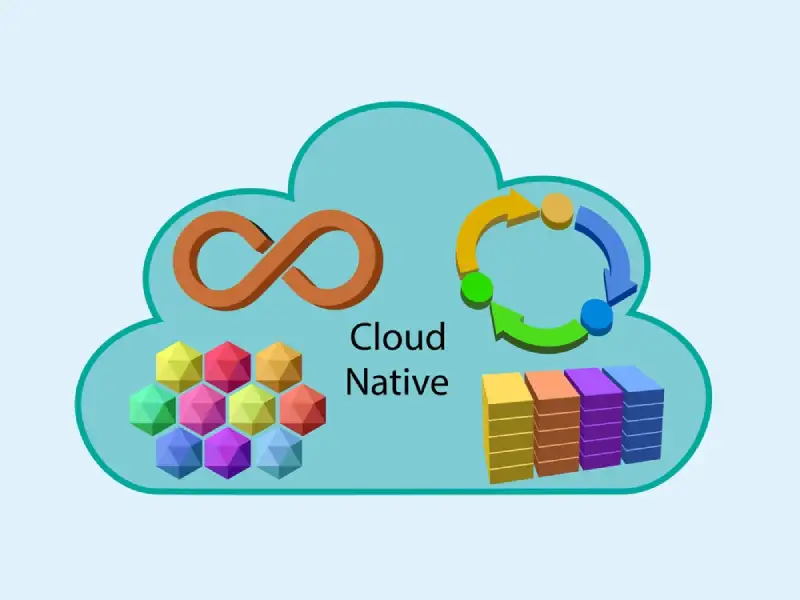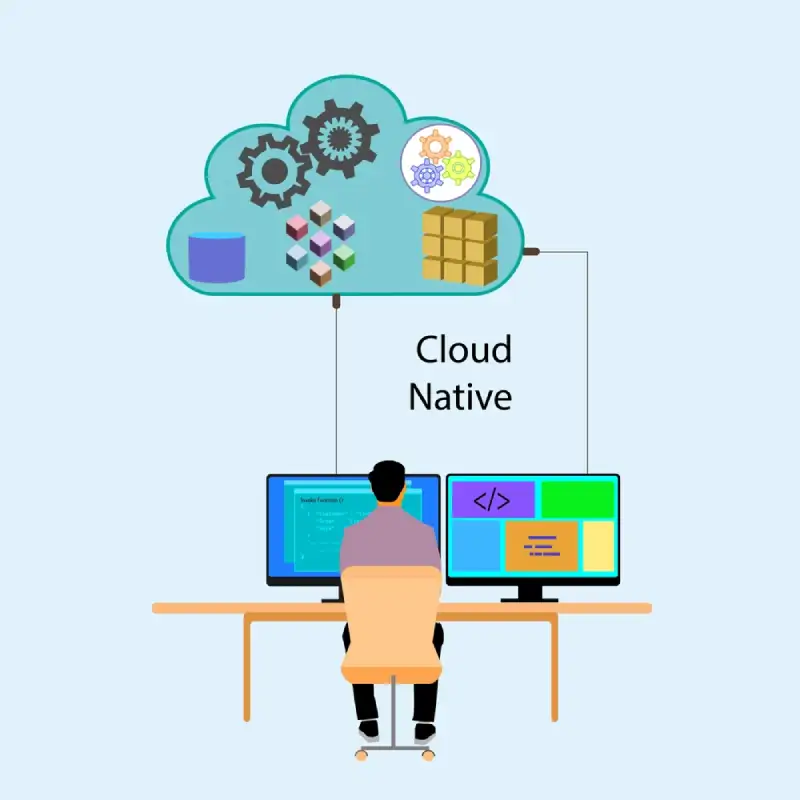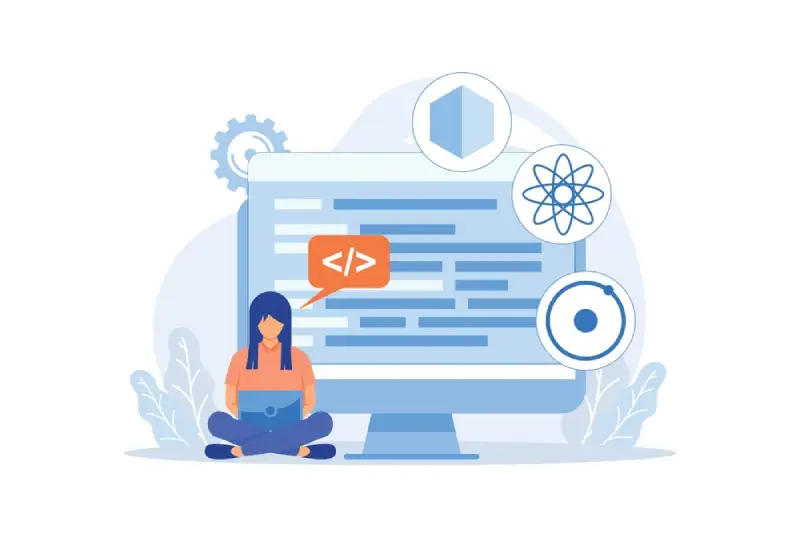What is Cloud Native? | Cloud Native Benefits

Table of Contents
Looking at the world of app developments, you will notice a trend to create cloud-native apps. Becoming a cloud-native is the ultimate goal of most applications.
But before you get into it, you should be aware of what is cloud native all about. From this article, we will share more details with you on what cloud native means and What is cloud native application.
What is a cloud native application?
A cloud native application is an application that runs entirely on the cloud while taking advantage of distributed nature and elasticity offered by cloud infrastructure. It is quite different from traditional monolithic applications out there.
A cloud application would not function with a single unit. They are not custom-developed for specific middleware, operating systems, and language stacks.
Instead, the cloud native applications are developed based on a modern infrastructure, which uses the distributed and dynamic nature of the cloud. As a result, cloud native applications offer better reliability, scalability, cost efficiency, agility, and speed.
When you look at cloud nature architecture, you will also figure out that these applications can be broken down into numerous self-contained services. These services are managed through specific methodologies known as Continuous Delivery and Continuous Integration, DevOps, declarative APIs, microservices, and containers.
This architecture would assist a deployment team in deploying their applications independently while they develop. Moreover, it will be possible to fix issues, make updates, and deliver new features without causing any interruptions to the existing system.
For getting cloud server hosting at the best price, click here.
What is cloud native architecture?
Now you have a basic idea of what cloud native is all about. With that in mind, let’s deep dive and learn what is cloud native architecture all about.
Cloud Native Architecture is an approach to software development that focuses on building applications specifically for cloud environments, taking full advantage of cloud computing capabilities to deliver high-performance, scalable, and resilient applications. The core principles of Cloud Native Architecture are as follows:

If you want to buy domain name in a few steps, click here.
- Microservices
Applications are broken down into smaller, independently deployable components called microservices. This helps the developers manage any application easily, regardless of its complexity.
- Containers
Microservices are packaged as containers, which provide a lightweight, portable way to run applications.
- DevOps
Cloud Native Architecture emphasizes a DevOps culture that promotes collaboration and automation between development and operations teams. This provides an ideal environment for Continuous Development and Continuous Integration.
- Scalability
Cloud Native Architecture applications are designed to be horizontally scalable, meaning that they can be scaled up or down to meet changing demands.
- Resilience
Applications are designed to be fault-tolerant and resilient, able to self-heal and recover from failures. Regardless of the nature of the application you develop, consider adhering to the cloud-native architecture.
- Agility
Cloud Native Architecture encourages an agile development approach that enables rapid iteration and deployment of new features and functionality.
Cloud Native Architecture enables organizations to develop, deploy, and manage applications more efficiently, flexibly, and scalable manner. It helps organizations take full advantage of the benefits of cloud computing, such as cost-effectiveness, elasticity, and agility while improving overall application performance, availability, and reliability.
Cloud native benefits
Let’s look at some of the most prominent cloud native benefits. These benefits convince development teams worldwide to develop cloud native applications. Here are the most notable benefits that cloud-native applications can offer.

Cloud-native applications are highly scalable
Cloud-native applications are designed to scale up or down as demand changes, allowing you to respond quickly to changes in user traffic, workload, or business needs. If you don’t want to throw away your existing system and implement a new one in the future, you should think about developing cloud native applications.
Cloud native applications are highly resilient
Cloud-native applications are fault-tolerant, which can recover quickly from failures and keep running even if one or more components fail.
Cloud native applications are agile
Cloud native applications are designed to be elegant, meaning they can be updated and deployed quickly and easily. This lets you quickly iterate and improve your software systems in response to changing business needs.
Cloud native applications can help you with saving money
Cloud native applications are designed to run efficiently in the cloud, which can reduce infrastructure costs and improve resource utilization. Imagine the price that you will have to bear if there is a need to purchase all hardware and infrastructure that you need to host an application. You can overcome all these expenses by building a cloud-native application.
Cloud-native applications are flexible
Cloud native applications can run on various platforms, allowing you to choose the cloud provider that best meets your needs.
Cloud native applications bring DevOps to the picture
Cloud-native development practices promote collaboration between developers and operations teams, allowing you to build, test, and deploy applications faster and more efficiently. This will help you continuously build the system to cater to your business requirements along with time.
Cloud native applications offer a higher level of security
Cloud-native applications can leverage advanced security features provided by cloud platforms to enhance security and protect against cyber threats.
What is the difference between cloud and cloud native?

Now you know what is meant by cloud native application. As you explore cloud native apps, you will notice that cloud and cloud native are used interchangeably. Do both these refer to the same thing? Cloud and cloud-native are related concepts, but they refer to different things.
The cloud delivers computing services – servers, storage, databases, networking, software, and analytics – over the internet rather than from a local, on-premises computer (If you want to know what is cloud computing in simple terms , click and read more). Cloud computing allows users to access these resources on an as-needed basis without the need for physical infrastructure.
“Cloud-native,” on the other hand, refers to a specific approach to developing and running applications that takes full advantage of cloud computing.
A cloud-native application is designed to run on a cloud platform, such as Amazon Web Services (AWS), Microsoft Azure, or Google Cloud Platform. It is built using cloud-native technologies and practices.
Cloud-native applications are typically designed to be highly scalable, resilient, and portable, and they are often built using containerization, microservices, and serverless computing (read more about pros and cons of serverless computing ).
These technologies allow applications to be broken down into smaller, more manageable components, which can be easily moved between different cloud environments and scaled up or down as needed to meet changing demands.
Conclusion
This article lets you figure out What is cloud native application. If you are looking forward to developing applications, you have no other option to consider than building cloud-native applications. It would be the future of application development, and you will never regret the idea of developing cloud native applications.





